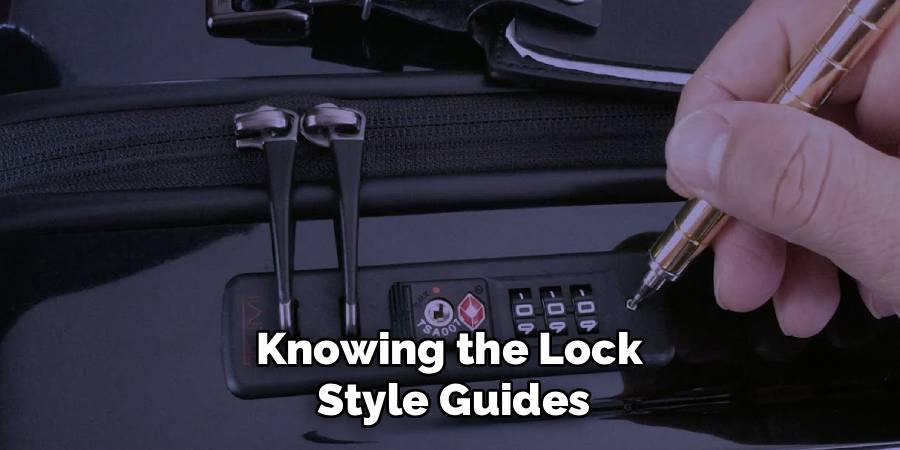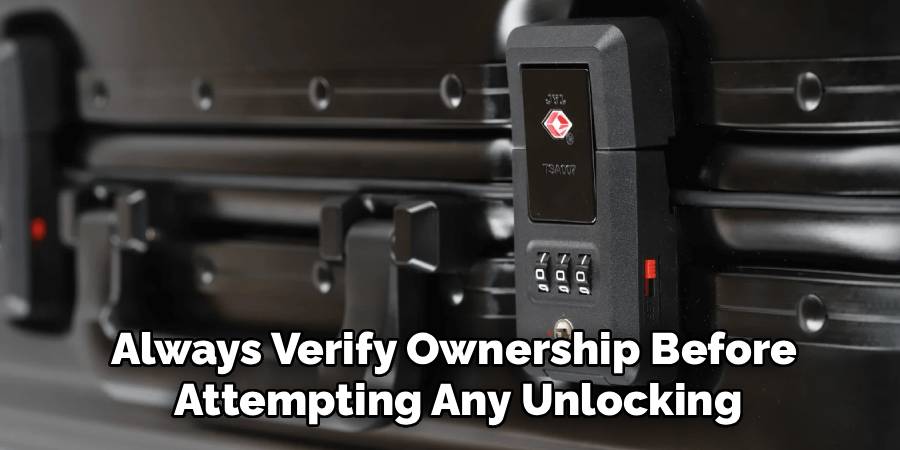Traveling can be stressful, and the last thing you want is to be stranded in an airport or hotel room, unable to access your belongings due to a locked suitcase. Tumi locks, known for their quality and robust protection, often come as standard on many of the brand’s luggage and travel accessories. However, there are times when even the most reliable travelers forget a combination, misplace a key, or encounter a stuck mechanism at exactly the wrong moment.

Learning how to pick a Tumi lock can be critical in situations like lost access to luggage during a trip. This comprehensive guide takes you through ethical and practical steps to regain entry to your own Tumi lock—always emphasizing responsible and legal usage. We’ll explain various lock types, necessary tools, detailed procedures, troubleshooting tips, and preventive strategies so that you’re never caught off guard.
Understanding Tumi Lock Mechanisms
Types of Tumi Locks
Tumi locks are designed to be secure and user-friendly, safeguarding your valuables during transit. The most common types include combination locks and TSA-approved locks. Combination models usually feature three or four rotating wheels, requiring the user to input a numeric code. TSA-approved locks, on the other hand, integrate a key slot that allows authorized agents to unlock the luggage without damaging it.
Each style of lock requires a different approach to picking, especially if you intend to open the lock without causing long-term damage. For instance, the tactile feedback of a spinning combination wheel guides the opening process differently than the precise pin manipulation of a keyed lock. Being able to identify your specific lock will help you choose the most effective and least invasive unlocking method.

The Importance of a Backup Plan
Before considering any form of lock picking, it’s vital to adopt best practices in safeguarding access to your belongings. Familiarize yourself with your lock immediately upon purchase—record the combination, note the key’s serial number, or keep extra keys in a secure location.
Tumi customers also enjoy robust warranty services and customer support. If you lose your combination or key, contacting Tumi support should be your first step. They may provide you with the master code or unlock instructions after verifying ownership. Resorting to manual picking should remain a last option, used only when traditional recovery steps aren’t feasible or practical.
Preparing to Pick the Lock
Gather Your Tools
Successfully picking a Tumi lock starts with assembling the right tools. For combination locks, you may want a paperclip or compact tool to manipulate the wheels without obstructing visibility. For keyed locks, having a basic lock pick set—including a tension wrench and a pick—will increase your chances of success. In urgent circumstances, improvised tools such as bobby pins or strong, narrow wires can sometimes serve as replacements.

Before starting, give the lock a thorough visual check to ensure it is in serviceable condition. Using metal tools on a plastic or lightweight lock can lead to permanent damage, so take care to choose instruments that are sturdy yet gentle. Above all, remember that improper tool use can render the lock—and possibly your luggage—unusable, which is why careful preparation is essential.
Set Up a Calm Environment
Patience and concentration are your best allies in this process, so take steps to prepare your workspace before attempting to pick the lock. Find a quiet, well-lit place with enough room to spread out your tools and the luggage itself. Avoid crowded public areas, as distractions and the watchful eyes of passersby can add unnecessary stress or even invite suspicion.
Make sure the bag is stable and cannot shift unexpectedly during the procedure. If you are picking the lock at home, use a tray or towel beneath your luggage to provide a soft, non-slip surface. Maintaining steady hands and a clear focus will reduce mistakes and help prevent accidental damage.
How to Pick a Tumi Lock: Step-by-Step Guide
Identify the Lock Style
Before you start picking, it’s crucial to determine which type of Tumi lock you have. Is it a combination lock or a keyed lock?
- Combination locks are recognized by their rotating number wheels—usually three or four—that must align perfectly to open.
- Keyed locks, in contrast, feature a small keyhole for manual opening, often included for TSA-approved models.
Knowing the lock style guides, which tools and techniques you should use. Combination locks generally depend on tactile and auditory feedback, while keyed models require precise manipulation of pins inside the keyway.

Picking a Combination Tumi Lock
Step 1: Reset to Neutral
Spin all the wheels several times to ensure they are free of debris and set to a default, neutral position. If you remember part of the original combination, start from there for a potential shortcut.
Step 2: Identify Each Wheel’s Feedback
Starting from the first wheel, gently pull on the shackle or open button while slowly turning the wheel. With a light but consistent tension, you should feel subtle changes—a faint “click” or a small jump in resistance—indicating the correct digit. Repeat for each wheel, maintaining a steady pull throughout.
Step 3: Test Guessed Combinations
Once all wheels offer feedback, cautiously attempt to open the lock. Do not force the mechanism. If the lock doesn’t yield, go back and adjust each wheel slightly, paying close attention to changes in feel or sound.
Practical Tips
- Use a flashlight or magnifier to inspect the alignment of indicator marks, which are usually etched near the wheels.
- If you hit a stubborn wheel, try reversing direction or rotating it one place at a time while holding steady tension.
- Stay patient—a rushed approach often leads to being stuck or damaging the lock.
Picking a Keyed Tumi Lock
Step 1: Insert Tools
Place a tension wrench (or small flat metal object) into the base of the keyhole and apply gentle rotational pressure in the direction the key would turn.
Step 2: Manipulate Pins
Insert a pick into the upper part of the keyway. Feel for small spring-loaded pins and gently lift each one upward. A correctly lifted pin produces a faint click or a noticeable give in the tension wrench. Progress slowly from pin to pin—Tumi locks often have between four and six pins.
Step 3: Turn the Lock
Once all pins are set at the proper shear line, the lock should rotate and open. Avoid excessive force; if the lock doesn’t open, reduce or increase the pressure slightly and repeat the process.
Troubleshooting and Common Challenges
What If the Lock Doesn’t Open?
Lock picking is as much art as science, and initial failures are common, especially for beginners. The most frequent mistakes include applying too much force to the shackle or keyway, skipping steps, or misjudging tactile feedback.
If the lock remains closed:
- Pause and reset your process. Take a short break—fatigue can dull your sensitivity to feedback.
- Double-check your tools and environment. A poor angle or bad lighting can make all the difference.
- Attempt the technique a second time, ensuring each wheel or pin is manipulated gently and methodically.
If all else fails and the lock won’t open, avoid further attempts to prevent damage. At this stage, consulting a professional locksmith or reaching out to Tumi customer service may be the best course of action.
Avoiding Lock Damage
Keeping your Tumi lock functional is just as important as getting it open. Here are some practical safeguards:
- Never use excessive force—if you feel significant resistance, reassess your approach.
- Avoid using random metal items that could deform the lock’s core or scuff the surface.
- After a successful pick, test the lock several times to ensure all parts still operate correctly.
Taking care of your tools and technique helps preserve the integrity of both your lock and luggage.
Ethical and Legal Considerations
It cannot be overstated: this guide is intended strictly for legal, ethical use—specifically, picking your own Tumi lock when you lose the key or combination. Picking or bypassing another person’s lock without permission is unlawful and punishable under theft and trespass laws. Always verify ownership before attempting any unlocking.

If you are unsure about legality or encounter a lock that does not belong to you, the safest route is to contact law enforcement or Tumi customer support for resolution. Responsible use of this guide ensures you stay within legal boundaries and maintain trust with travel and security personnel.
Preventing Future Lockouts
Record Your Combination or Key Details
The stress of a lockout is easily avoided through simple recordkeeping. As soon as you set a new combination or receive a key, write down these details and store them in a secure digital or physical location. Some travelers opt for password-protected notes on their phone, while others prefer a written record in a home safe.
Anyone using their luggage regularly should update their records whenever they replace or reset a lock. This proactive habit can save hours of frustration and reduce the risk of having to pick your own lock again in the future.
Invest in Backup Tools or Services
If you travel frequently, consider purchasing a spare lock or a set of backup keys kept separately from your main bag. Some digital smart luggage options offer electronic locking mechanisms that can be reset or controlled by your phone, minimizing future lockout risks altogether.
It’s also wise to check if your Tumi luggage has warranty coverage that includes lock-related services. Register your purchase with Tumi and explore additional protections for both the lock and the bag itself.
Conclusion
Gaining an understanding of how to pick a Tumi lock is useful for those rare but stressful occasions when you’re locked out of your own suitcase. Armed with the right tools, methodical technique, and an ethical approach, you can regain access without damaging your valuables. Remember, practicing precaution—such as recording combinations and investing in backup options—remains the best way to avoid getting locked out in the first place. Approach these steps with patience and responsibility, and you’ll travel confidently knowing you have a solution for any lockout emergency.
About
Safety Fic is a distinguished figure in the world of Diy design, with a decade of expertise creating innovative and sustainable Diy solutions. His professional focus lies in merging traditional craftsmanship with modern manufacturing techniques, fostering designs that are both practical and environmentally conscious. As the author of diy, Safety Fic delves into the art and science of Safety Fic-making, inspiring artisans and industry professionals alike.
Education RMIT University
(Melbourne, Australia) Associate Degree in Design (Safety Fic) Focus on sustainable design, industry-driven projects, and practical craftsmanship. Gained hands-on experience with traditional and digital manufacturing tools, such as CAD and CNC software.
Nottingham Trent University
(United Kingdom) Bachelor’s in diyfastly.com and Product Design (Honors) Specialized in product design with a focus on blending creativity with production techniques. Participated in industry projects, working with companies like John Lewis and Vitsoe to gain real-world insights.
Publications and Impact
In diy, Safety Fic his insights on indoor design processes, materials, and strategies for efficient production. His writing bridges the gap between artisan knowledge and modern industry needs, making it a must-read for both budding designers and seasoned professionals.
